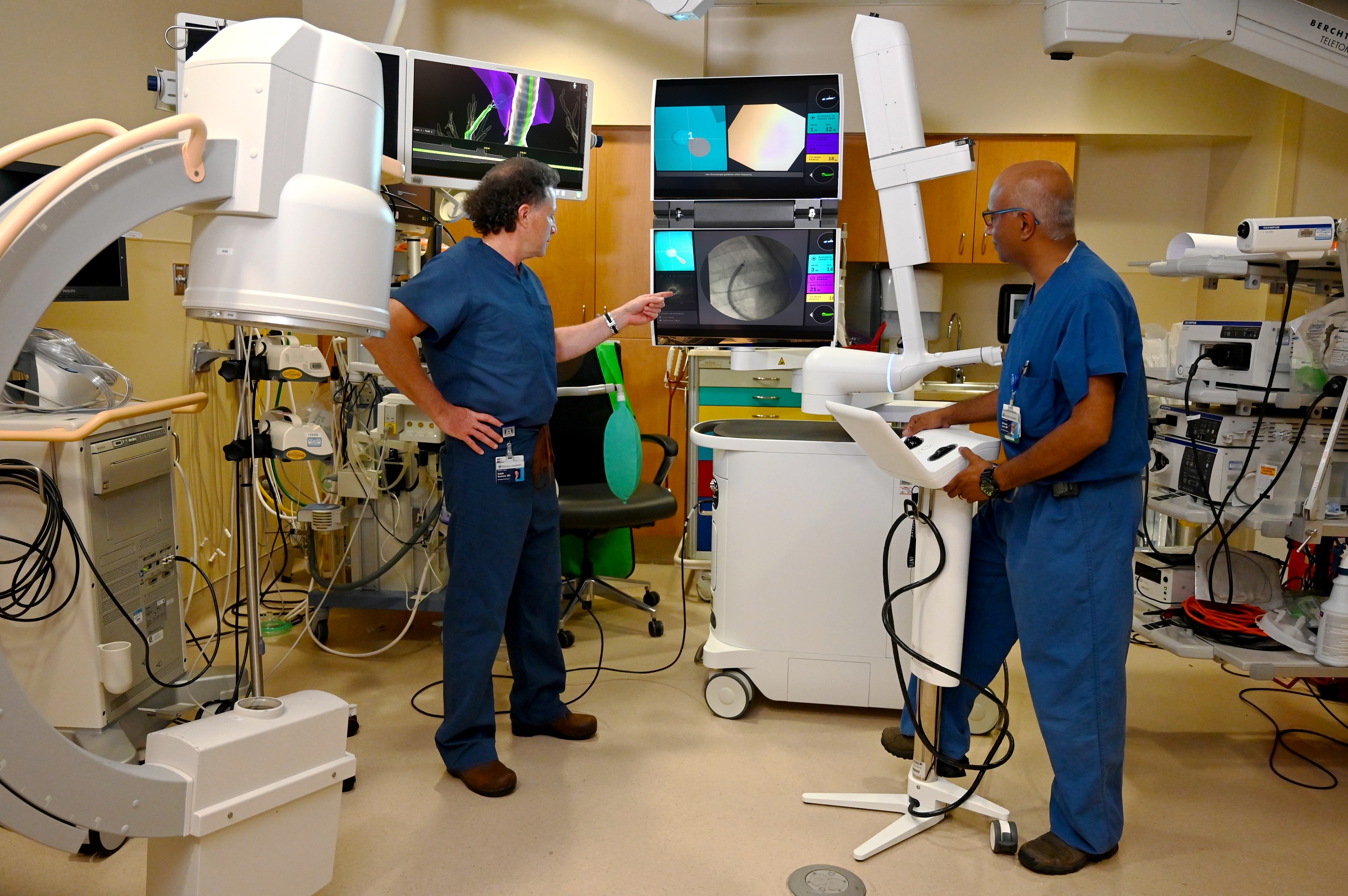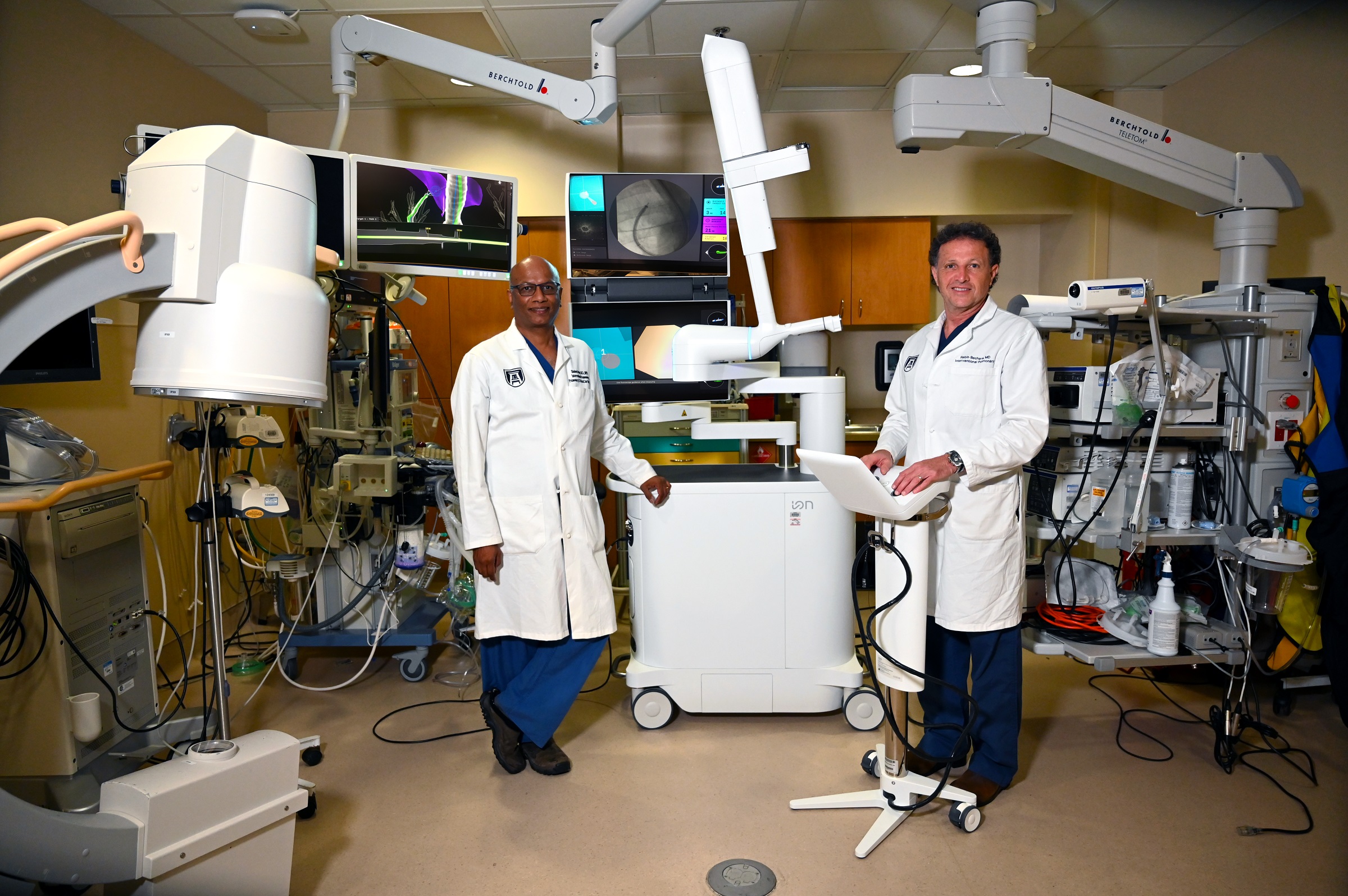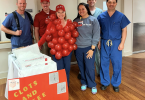Augusta University Health and the Georgia Cancer Center are pleased to announce the recent acquisition of the Ion endoluminal system. Ion is designed to address a challenging aspect of lung biopsy by enabling physicians to obtain tissue samples from deep within the lung.
“The Ion system features an ultra-thin, ultra-maneuverable catheter introduced orally, allowing diagnosis of smaller peripheral lung cancer lesions with minimal risk of complications,” said Dr. Shaheen Islam, chief of the Division of Pulmonary, Critical Care and Sleep Medicine at the Medical College of Georgia.
During bronchoscopy with Ion, the physician uses the controller to navigate to the tumor along a planned path. The catheter can articulate 180-degrees in any direction to pass through small, difficult-to navigate airways and around tight bends to reach all 18 segments of the lung. Ion’s peripheral vision probe provides direct vision during navigation. Once the pulmonary nodule is reached, the catheter locks in place. The Flexision biopsy needle, a flexible biopsy needle compatible with Ion, then passes through the catheter, even when positioned in tortuous airways. After advancing around tight-radius bends of the catheter, the needle deploys into the target location on a straight path.

From L-R: Drs. Rabih Bechara and Shaheen Islam in the Ion endoluminal robotic bronchoscopy suite at Augusta University Health.
“During biopsy, Ion’s Biopsy Marker feature lets physicians systematically track multiple biopsy attempts and helps visualize different biopsy needle trajectories,” said Dr. Rabih Bechara, director of the Interventional Pulmonology Fellowship Program at AU Health. “If real-time confirmation of a representative tissue sample is available, our team can redirect subsequent biopsy attempts into the confirmed target area.”
The Ion system is designed to fit easily into a bronchoscopy suite and integrate with existing technologies. Physical proximity has been taken into account with a design that keeps physicians close to the patient’s airways throughout the procedure. And Ion leverages existing imaging technologies with radial EBUS, fluoroscopic, virtual, and live views of the lung unified in a single heads-up display.
“We are truly thrilled to be a leader in this field and look forward to continuing to bring Augusta’s River Region minimally invasive robotic-assisted options,” Islam said. “It is just another example of our continued commitment to Patient-and-Family-Centered Care by offering patients new technology to improve the accuracy of a lung cancer diagnosis and treatment plan.”


